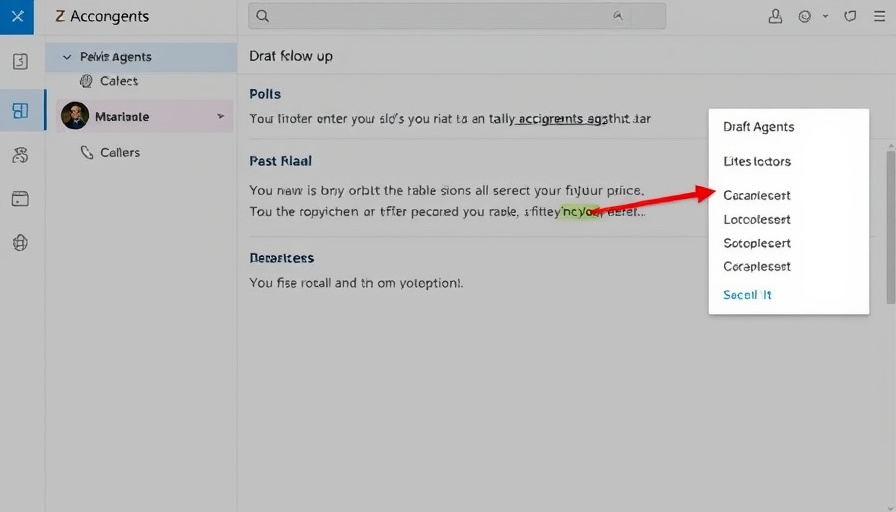
Drafting Effective Follow-Up Emails: A Must for Marketing Professionals
In the competitive landscape of marketing, effective communication can make or break a deal. After a call with clients or prospects, the handshake extends into the digital realm, and the importance of follow-up emails cannot be overstated. Follow-up emails serve as a vital touchpoint to remind the client of the discussion, express gratitude, and keep the momentum going. According to recent trends in marketing, personalized follow-up emails are key in cultivating client relationships, improving conversion rates, and enhancing brand loyalty.
Why Follow-Up Emails Matter
The power of a follow-up email lies in its ability to provide value and clarity post-conversation. Whether you’re finalizing a project, addressing concerns, or nurturing leads, an email can reiterate the main points of discussion and next steps. In fact, studies suggest that 80% of sales require five follow-ups to close, emphasizing the necessity of consistent communication. By re-engaging with clients after initial contact, you're not only reinforcing your commitment but also strategically positioning yourself in a constantly evolving marketplace.
Personalization: The Key Ingredient
One size does not fit all when it comes to follow-up emails. Personalization can significantly enhance the effectiveness of your message. Addressing the recipient by name, referencing specific topics discussed during the call, and tailoring your message to their unique needs dramatically increases engagement. A well-crafted, personalized email fosters a sense of connection, making the client feel valued and understood. As noted in industry research, personalized emails can lead to a 29% higher open rate and a 41% higher click-through rate than generic messages.
Structuring Your Follow-Up Email
Now that we understand the significance of follow-up emails, let’s explore how to structure one effectively. A concise format helps maintain the recipient's attention while delivering pertinent information. Here's a simple structure you can adapt:
- Subject Line: Keep it clear and succinct, e.g., "Thank You for Our Discussion" or "Next Steps Following Our Call".
- Opening: Start with a thank-you note, acknowledging their time and input during the call.
- Body: Summarize key points of the conversation, addressing any action items discussed.
- Closing: Include a call to action, prompting them to reply, provide feedback, or schedule a follow-up meeting.
- Signature: Conclude with a professional closing and your contact details.
Always remember the importance of brevity and clarity as they are paramount in today’s fast-paced marketing environment.
Utilizing Automation Tools
Incorporating tools like Zapier in your email workflow can save time and ensure consistency. Automating follow-ups reduces the risk of missed opportunities and allows marketers to focus on crafting personalized content. This efficiency doesn’t just free up time but also enhances strategic outreach. Developing a workflow that includes templates for various scenarios ensures you're always prepared, whether for a simple thank-you note or addressing complex follow-up questions.
Conclusion: Enhance Your Client Engagement Today
Follow-up emails are more than just a courteous gesture; they are a strategic necessity in the marketing world. By utilizing personalized messages, structured formats, and automation tools, marketing professionals can enhance their client engagement and increase conversion rates. As you prepare for your next call, remember that how you follow up can be just as crucial as the conversation itself. Why not take a moment to refine your follow-up strategy today and watch your client relationships flourish?
 Add Row
Add Row  Add
Add 




Write A Comment